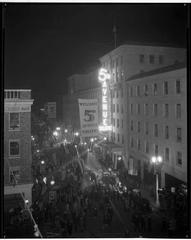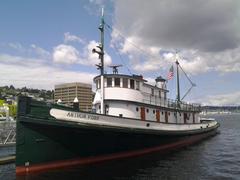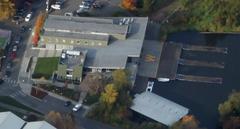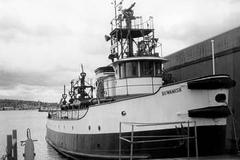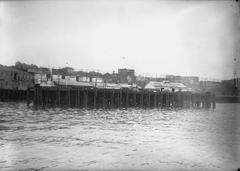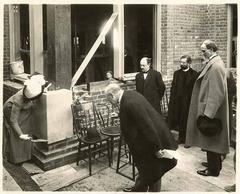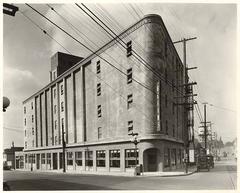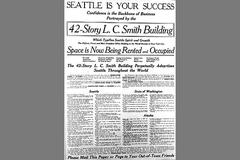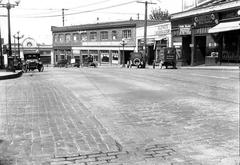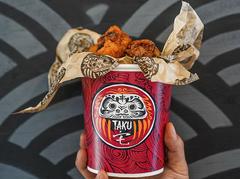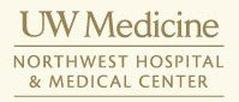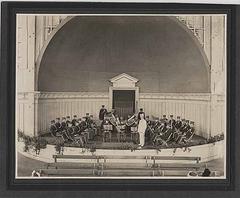Myrtle Edwards Park Seattle Visiting Hours, Tickets, and Attractions Guide
Date: 04/07/2025
Introduction: History and Significance
Myrtle Edwards Park is a celebrated urban green space nestled along Seattle’s Elliott Bay waterfront. Stretching approximately 1.25 miles, the park is renowned for its sweeping views of Puget Sound, the Olympic Mountains, and, on clear days, Mount Rainier. Named after Myrtle Edwards—a former Seattle City Council member and environmental advocate—the park is a testament to the city’s dedication to public art, environmental restoration, and urban revitalization (Seattle Parks & Recreation).
Originally an industrial corridor lined with grain terminals and railway infrastructure, the area underwent a significant transformation beginning in the late 20th century. Led by Charles Anderson Landscape Architects and supported by local civic and cultural organizations, the redevelopment reconnected Seattle’s downtown with its waterfront, overcoming barriers like rail lines through greenway networks and pedestrian bridges (BlueHealth Tools).
Myrtle Edwards Park is a vital link within a broader system of waterfront parks, including Olympic Sculpture Park and Centennial Park. This corridor is rich in ecological habitats, public art installations—such as Michael Heizer’s “Adjacent, Against, Upon”—and recreational trails, offering an immersive experience that celebrates Seattle’s maritime legacy, environmental stewardship, and dynamic cultural scene.
Currently, the park is undergoing a $45 million revitalization as part of the Elliott Bay Connections project, funded by leading philanthropic donors and managed by the Downtown Seattle Association. This initiative seeks to enhance trail connectivity, native landscaping, accessibility, and public amenities in preparation for the 2026 FIFA World Cup (Downtown Seattle Association).
This comprehensive guide covers everything from visiting hours and free admission to accessibility features, nearby attractions, and ongoing developments, making it your essential resource for exploring Seattle’s waterfront oasis (Travel Lemming).
Table of Contents
- Origins and Naming
- Development and Urban Integration
- Public Art and Cultural Landmarks
- Industrial Heritage and Urban Landscape
- Environmental Restoration and Ecological Significance
- Social and Recreational Importance
- Visitor Information: Hours, Tickets, Accessibility & Directions
- Ongoing Revitalization and Future Developments
- Place Attachment and Sense of Identity
- Frequently Asked Questions (FAQ)
- Overview and Park Layout
- Recreational Trails and Accessibility
- Key Attractions and Amenities
- Adjacent Areas and Connectivity
- Visitor Tips
- Visuals and Media
- Related Articles
- Conclusion and Call to Action
Origins and Naming
Myrtle Edwards Park honors Myrtle Edwards, a distinguished Seattle City Council member and champion of public green spaces. Officially named in 1976, the park stands as a living legacy of her commitment to urban beautification and environmental advocacy (Seattle Parks & Recreation).
Development and Urban Integration
The transformation from an industrial zone to a public park was part of Seattle’s broader waterfront revitalization. Key interventions between 2001 and 2007, led by Charles Anderson Landscape Architects in partnership with the Seattle Art Museum and other stakeholders, introduced pedestrian bridges and greenway networks, reconnecting the urban core to its natural setting (BlueHealth Tools). Myrtle Edwards Park anchors a continuous corridor of public spaces along the waterfront, linking Olympic Sculpture Park to the south and Centennial Park to the north.
Public Art and Cultural Landmarks
Public art is integral to Myrtle Edwards Park’s identity. Michael Heizer’s “Adjacent, Against, Upon”—three massive granite boulders arranged in relation to concrete platforms—symbolizes the interplay between nature and the built environment (Mark Spitzer Designs). The adjoining Olympic Sculpture Park features works by Alexander Calder and Jaume Plensa, establishing the area as a corridor for artistic and cultural engagement (Mark Spitzer Designs).
Industrial Heritage and Urban Landscape
The park’s landscape retains elements of Seattle’s working waterfront, such as the grain terminal and its loading pier, which serve both functional and aesthetic purposes (Mark Spitzer Designs). Myrtle Edwards Park’s layout—pedestrian paths along the water and bike trails paralleling the railroad—reflects the city’s unique blend of urban mobility and natural beauty (BlueHealth Tools).
Environmental Restoration and Ecological Significance
Myrtle Edwards Park is a model for urban environmental restoration. Its shoreline features gravel beaches and driftwood, creating habitats for marine life and birds. The park’s plantings—lawns, native trees, wildflowers, and a rose garden—support biodiversity and offer spaces for birdwatching and relaxation (BlueHealth Tools). These efforts enhance both ecological health and the visitor experience.
Social and Recreational Importance
The park is a popular gathering place, supporting activities such as walking, jogging, cycling, picnicking, photography, fishing, and outdoor exercise (BlueHealth Tools). Numerous benches, open lawns, and viewing points encourage social interaction and community events. Its proximity to downtown and seamless integration with Olympic Sculpture Park make it an essential part of Seattle’s waterfront experience.
Visitor Information: Hours, Tickets, Accessibility & Directions
- Visiting Hours: Open daily, typically from 6:00 AM to 11:00 PM.
- Admission: Free for all visitors.
- Accessibility: Paved, ADA-compliant trails suitable for wheelchairs and strollers. Accessible restrooms are located near main entrances.
- Parking: Limited street parking near Elliott Avenue West and 1st Avenue West; additional options in downtown garages.
- Public Transit: Served by King County Metro buses; accessible from downtown Seattle transit hubs.
- Travel Tips: Wear comfortable shoes and bring water. Early mornings and weekdays are less crowded.
- Nearby Attractions: Olympic Sculpture Park, Seattle Center, Pike Place Market.
Ongoing Revitalization and Future Developments
The Elliott Bay Connections (EBC) project is a transformative, privately funded initiative scheduled for completion by summer 2026 (Downtown Seattle Association). Key upgrades include a protected greenway trail, expanded native landscaping, improved lighting, and a new amenities building inspired by Coast Salish design. These enhancements will further unify Myrtle Edwards and Centennial Parks, creating a seamless 16-acre public space.
Place Attachment and Sense of Identity
Myrtle Edwards Park exemplifies Seattle’s reconciliation of industrial history with environmental stewardship and public space. Its accessible design and integration of art nurture a strong sense of place and community identity (BlueHealth Tools).
Frequently Asked Questions (FAQ)
-
Is there a fee to enter Myrtle Edwards Park?
No, admission is free. -
What are the park’s hours?
Open daily, generally from 6:00 AM to 11:00 PM. -
Is the park wheelchair accessible?
Yes, with paved, ADA-compliant trails and restrooms. -
Are dogs allowed?
Yes, on leash. -
Are there bike trails?
Yes, with dedicated pedestrian and bicycle paths. -
How do I get there by public transit?
Served by King County Metro buses and within walking distance of downtown transit hubs.
Overview and Park Layout
Myrtle Edwards Park stretches 1.25 miles along Elliott Bay, covering 12 acres. Its shoreline is dotted with driftwood, wild grasses, and restored beach habitats (Hoodline). Mature maples, native shrubs, and wildflowers line the trails, with ongoing enhancements from the EBC project.
Recreational Trails and Accessibility
The park’s paved, multi-use trail is a favorite for walkers, joggers, cyclists, and skaters, connecting seamlessly to Centennial Park and Olympic Sculpture Park. Ongoing improvements ensure full ADA accessibility. During construction, temporary trails and clear detour signage maintain access.
Key Attractions and Amenities
- Waterfront Views and Wildlife: Spectacular sunset vistas and opportunities to spot seabirds and harbor seals.
- Public Art: Sculptures and artistic benches blend with the natural setting (Travel Lemming).
- Picnic Areas: New and upgraded seating and picnic tables provide scenic resting spots.
- Amenities: A new Coast Salish-inspired building with restrooms and concessions is slated to open by 2026.
Adjacent Areas and Connectivity
- Olympic Sculpture Park: Outdoor art and gardens, part of the Seattle Art Museum’s campus (Travel Lemming).
- Centennial Park: Extends the trail north, with fishing piers and viewpoints (Hoodline).
- Belltown Neighborhood: Bustling with dining, nightlife, and cultural venues.
- Expedia Group Campus and The Beach: Public waterfront spaces connected by the multi-use trail.
Visitor Tips
- Visit early or on weekdays for a quieter experience.
- Dress in layers and bring water.
- Take public transit or bike to avoid parking challenges.
- Check official sources for construction updates.
Visuals and Media
Images and videos highlight waterfront views, trails, public art, and panoramic sunsets. Interactive maps and virtual tours are available online for pre-visit exploration.
Related Articles
Conclusion and Call to Action
Myrtle Edwards Park represents Seattle’s successful commitment to sustainable urban renewal, environmental restoration, and cultural enrichment. The ongoing Elliott Bay Connections project promises to further enhance the park’s natural habitats, safety, and connectivity. Whether you’re drawn by its scenic vistas, cultural landmarks, or tranquil trails, Myrtle Edwards Park is a must-visit destination for residents and tourists alike.
Plan your visit by downloading the Audiala app for real-time updates, trail maps, and event details. For current information and visitor tips, consult official resources and stay connected via social media.
References
- Myrtle Edwards Park Visiting Hours, Tickets & Seattle Historical Sites Guide, 2025, Seattle Parks & Recreation (http://www.seattle.gov/parks/find/parks/myrtle-edwards-park)
- Myrtle Edwards Park Development and Urban Integration, 2025, BlueHealth Tools (https://bluehealth.tools/51-2-copy-copy-4/)
- Public Art and Cultural Landmarks in Myrtle Edwards Park, 2025, Mark Spitzer Designs (https://markspitzerdesigns.wordpress.com/2014/05/30/myrtle-edwards-park/)
- Elliott Bay Connections Revitalization Project, 2025, Downtown Seattle Association (https://downtownseattle.org/programs-services/parks-and-public-spaces/elliott-bay-connections/)
- Overview and Visitor Guide to Myrtle Edwards Park, 2025, Travel Lemming (https://travellemming.com/seattle-neighborhoods/)
- Elliott Bay Connections Construction Updates, 2025, Elliott Bay Connections (https://elliottbayconnections.org/construction)
